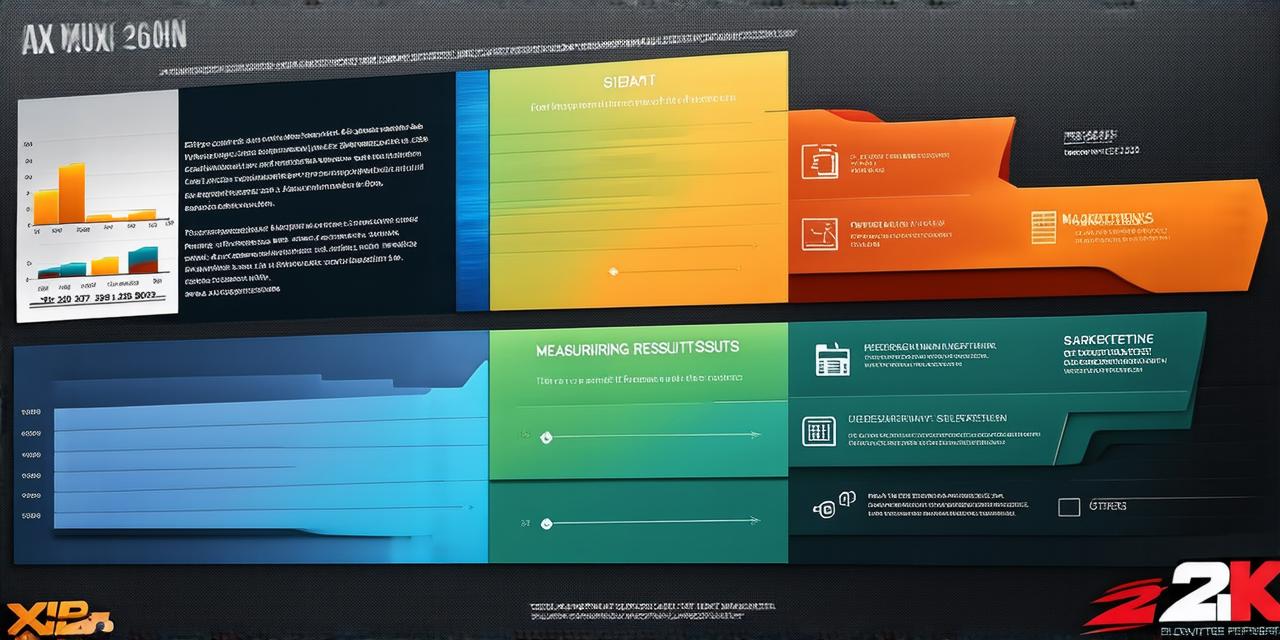As the gaming industry continues to grow and evolve, game developers are increasingly investing in marketing campaigns to promote their games and attract new players. However, with so many different marketing strategies available, it can be difficult for game developers to determine which ones are most effective in reaching their target audience and achieving their desired outcomes.
1. Define Your Goals and Metrics
Before you begin any marketing campaign, it’s important to define your goals and establish the metrics you will use to measure success. This might include increasing downloads or sales, generating buzz or social media engagement, or reaching a specific demographic or target audience. By setting clear objectives and identifying the key performance indicators (KPIs) that will help you achieve them, you can focus your efforts on the most effective strategies and track your progress over time.
1. Choose Your Marketing Channels
There are many different marketing channels that game developers can use to reach their target audience, including social media platforms, email marketing, influencer partnerships, paid advertising, and more. Each of these channels has its own unique strengths and weaknesses, and the most effective approach will depend on your specific goals and audience.
1. Track Your Traffic and Engagement
Once you have established your marketing channels and defined your goals, it’s important to track your traffic and engagement metrics to understand how your campaigns are performing. This might include monitoring website visits, social media followers, click-through rates, and other relevant metrics that will help you gauge the impact of your efforts.
1. Measure Your Conversions and ROI
In addition to tracking your traffic and engagement metrics, it’s also important to measure your conversions and return on investment (ROI) to determine the overall effectiveness of your marketing campaigns. This might include analyzing the number of downloads or sales generated by your efforts, as well as the cost per acquisition (CPA) and revenue per acquisition (RPA) metrics that will help you understand the financial impact of your campaigns.
1. Conduct Surveys and Focus Groups
To gain a deeper understanding of how your marketing campaigns are resonating with your target audience, consider conducting surveys or focus groups to gather feedback and insights from players and potential customers. This can help you identify any areas where your messaging or creative may be falling short, as well as areas for improvement or further optimization.
1. Analyze Competitor Strategies
Finally, to stay ahead of the curve and optimize your own marketing efforts, it’s important to analyze the strategies and tactics being used by your competitors in the gaming industry. This might include monitoring their social media presence, tracking their advertising spend, or conducting competitive analysis to identify areas where you may be able to differentiate yourself and gain a competitive advantage.
1. Case Studies: Success Stories in Game Marketing
To illustrate how these principles can be applied in practice, let’s take a look at some real-life examples of successful game marketing campaigns from the gaming industry.
1. Fortnite: The Power of Influencer Partnerships
Fortnite is a popular battle royale game that has gained a massive following due in part to its innovative approach to marketing and engagement. One of the key factors behind Fortnite’s success is its strategic partnerships with influencers and celebrities, which have helped the game reach new audiences and generate buzz around its various events and challenges.
By collaborating with high-profile individuals like Drake and Marshmello, Fortnite has been able to tap into their fan bases and drive significant traffic and engagement to its platform. The game’s creators have also leveraged social media influencers to promote in-game events and challenges, as well as new features and content updates.
1. Minecraft: The Importance of Community Engagement

Minecraft is another game that has achieved immense success through its focus on community engagement and player-driven content. The game’s creators have actively encouraged players to create their own content and share it with others, which has helped to foster a sense of ownership and investment in the platform.
By providing tools and resources for players to create and share their own content, Minecraft has been able to tap into its community’s creativity and drive engagement and retention. The game’s creators have also leveraged this user-generated content to promote new features and updates, as well as to attract new players and keep existing ones coming back for more.
1. League of Legends: The Value of Data Analysis and Optimization
League of Legends is a highly competitive online game that has achieved significant success through its focus on data analysis and optimization. The game’s creators have used analytics tools to track player behavior, identify trends and patterns, and make data-driven decisions about how to optimize their marketing and engagement strategies.
By analyzing player data, League of Legends has been able to identify which features and content are most popular with its audience, as well as areas where it may need to improve or innovate. The game’s creators have also used this data to inform their advertising and promotional efforts, targeting specific audiences and tailoring their messaging to appeal to different player demographics and preferences.
1. Optimizing Your Game Marketing Campaigns for Maximum Impact
Now that we’ve looked at some real-life examples of successful game marketing campaigns, let’s take a closer look at how you can apply these principles to your own marketing efforts and optimize your campaigns for maximum impact.
1. Start with a Strong Foundation
Before you begin any marketing campaign, it’s important to have a strong foundation in place that will support your efforts and help you achieve your desired results. This might include defining your target audience, establishing clear goals and KPIs, and selecting the right channels and tactics for your needs.
1. Measure Your Success Continuously
Once you have launched your marketing campaign, it’s important to measure your success continuously and adjust your approach as needed based on the data you collect. This might include monitoring your traffic and engagement metrics, analyzing your conversions and ROI, and gathering feedback from players and customers through surveys or focus groups.
1. Stay Adaptable and Flexible
Finally, to stay ahead of the curve and adapt to changing market conditions, it’s important to be adaptable and flexible in your approach to game marketing. This might include pivoting your messaging or creative based on feedback from players, incorporating new features or content updates to keep your audience engaged, or adjusting your advertising spend based on performance data.
Conclusion
Game marketing is a complex and dynamic field that requires careful planning, execution, and optimization to achieve success. By applying these principles and best practices, you can position your game for maximum impact and drive better results for your business. Remember to start with a strong foundation, measure your success continuously, and stay adaptable and flexible in your approach, and you’ll be well on your way to achieving your desired outcomes.




